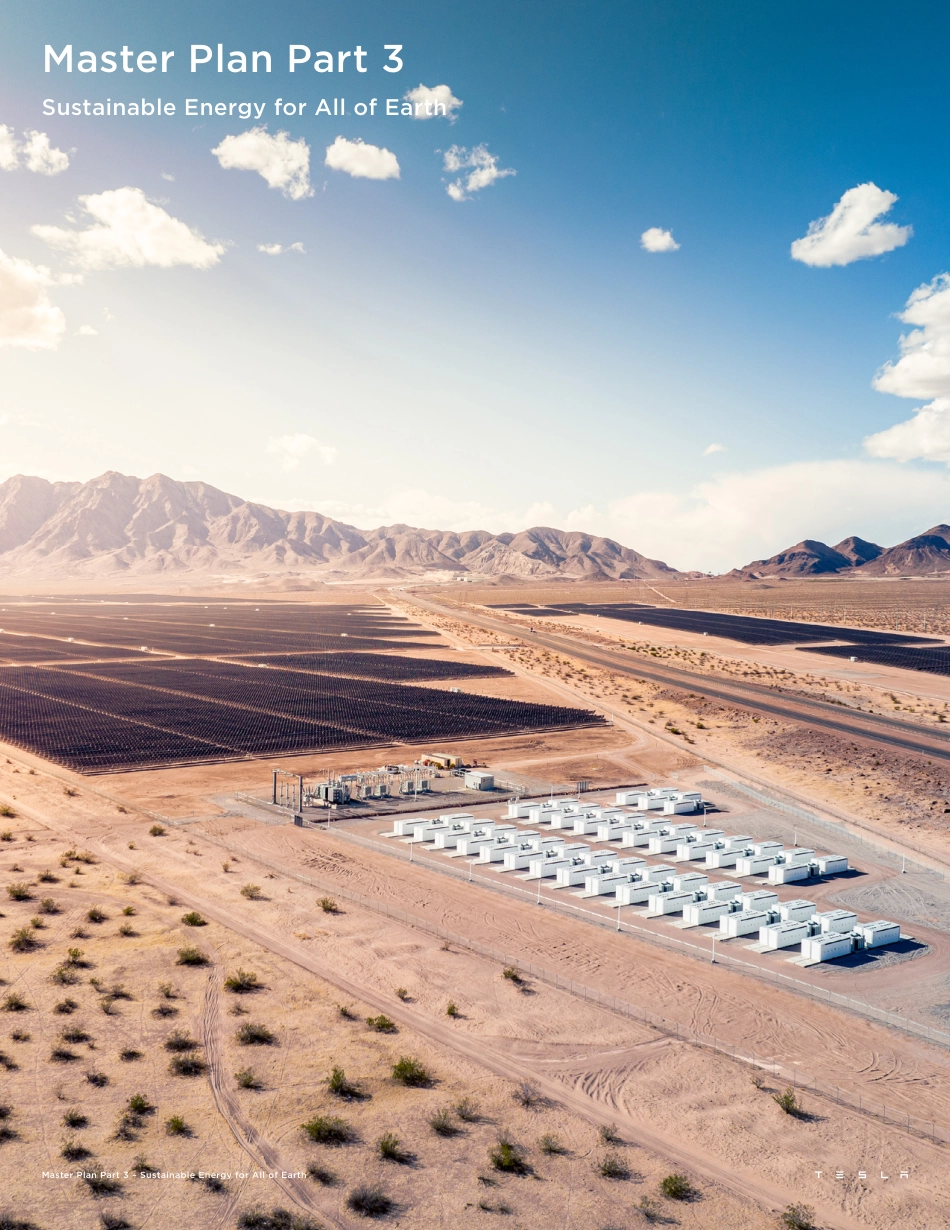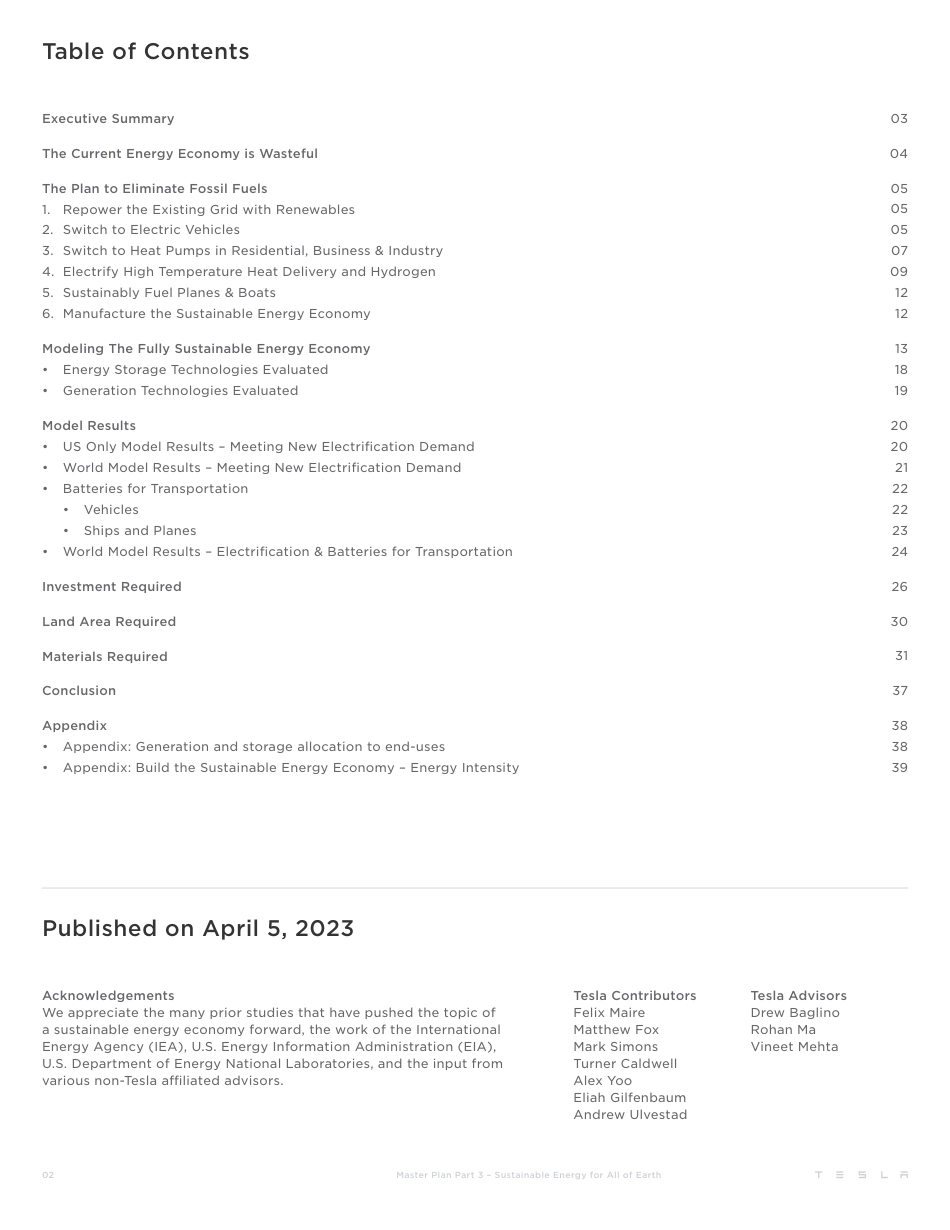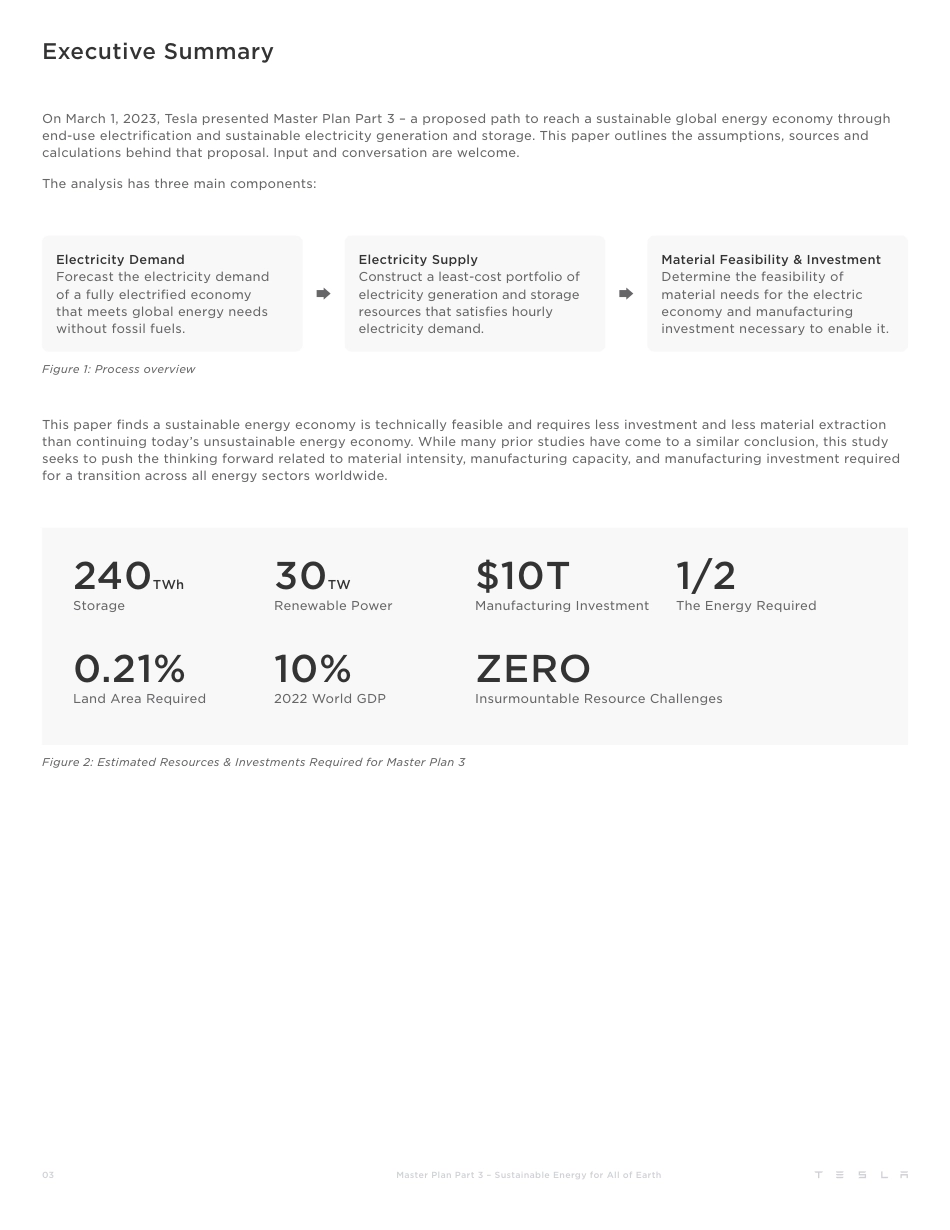Master Plan Part 3 – Sustainable Energy for All of EarthMaster Plan Part 3Sustainable Energy for All of Earth02Master Plan Part 3 – Sustainable Energy for All of EarthTable of ContentsExecutive SummaryThe Current Energy Economy is WastefulThe Plan to Eliminate Fossil Fuels 1. Repower the Existing Grid with Renewables 2. Switch to Electric Vehicles 3. Switch to Heat Pumps in Residential, Business & Industry 4. Electrify High Temperature Heat Delivery and Hydrogen 5. Sustainably Fuel Planes & Boats 6. Manufacture the Sustainable Energy EconomyModeling The Fully Sustainable Energy Economy • Energy Storage Technologies Evaluated • Generation Technologies EvaluatedModel Results • US Only Model Results – Meeting New Electrification Demand • World Model Results – Meeting New Electrification Demand • Batteries for Transportation • Vehicles • Ships and Planes • World Model Results – Electrification & Batteries for TransportationInvestment RequiredLand Area RequiredMaterials RequiredConclusionAppendix • Appendix: Generation and storage allocation to end-uses • Appendix: Build the Sustainable Energy Economy – Energy Intensity030405 05 05 07 09 12 1213 18 1920 20 21 22 22 23 242630313738 38 39Acknowledgements We appreciate the many prior studies that have pushed the topic of a sustainable energy economy forward, the work of the International Energy Agency (IEA), U.S. Energy Information Administration (EIA), U.S. Department of Energy National Laboratories, and the input from various non-Tesla affiliated advisors.Tesla Contributors Felix Maire Matthew Fox Mark Simons Turner Caldwell Alex Yoo Eliah Gilfenbaum Andrew UlvestadTesla Advisors Drew Baglino Rohan Ma Vineet MehtaPublished on April 5, 202303Master Plan Part 3...



